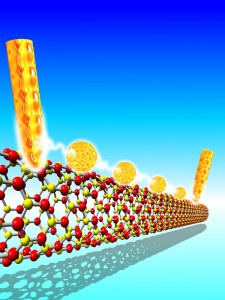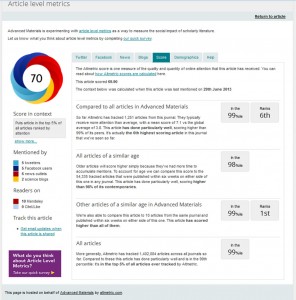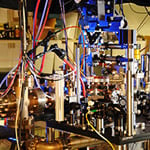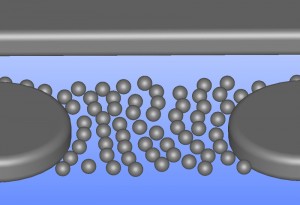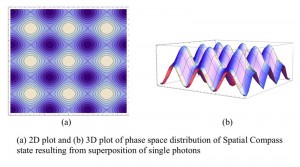 Title: Intrinsic Correlations of Quantum Lights in Macroscopic Environments
Title: Intrinsic Correlations of Quantum Lights in Macroscopic Environments
Advisor: Dr. Kim Fook Lee
Co-Advisor: Dr. Jacek Borysow
Quantum Information Science (QIS) is an up-and-coming field that exploits the peculiar properties of quantum superposition and entanglement by using quantum objects, such as atoms, molecules, photons and phonons. As photons interact weakly with their environment and are very robust against environmental disturbance, they are considered the most promising candidates for the applications of QIS. The preservation of intrinsic quantum properties of light in macroscopic environments will be the key for practical realization of QIS. For my Ph.D. research, I’m working with different quantum light sources, spanning from single photon systems such as entangled photons to millions of photons such as weak coherent light. I study the intrinsic correlations of quantum light in macroscopic environments, while mainly concerned with their applications in quantum metrology and communications.
by Yong Meng Sua
References:
- Y. M. Sua, J. Malowicki, and K. F. Lee, “Quantum Correlation of Telecom Wavelength Photon-pair through Multiple Scattering Media,” in The Rochester Conferences on Coherence and Quantum Optics and the Quantum Information and Measurement meeting, OSA Technical Digest (online) (Optical Society of America, 2013), paper W6.27.
- Y. M. Su, J. Malowicki, M. Hirano, and K. F. Lee, “Generation of high purity entangled photon-pair in a short highly non-linear fiber,” Optics Letters, 38, 73-75 (2013)
- Y. M. Sua and K. F. Lee, “Macroscopic mechanical correlations using single-photon spatial compass state and operational Wigner function,” Phys. Rev. A 85, 062113 (2012).
- Y. M. Sua, E. Scanlon, T. Beaulieu, V. Bollen, and K. F. Lee, “Intrinsic quantum correlations of weak coherent states for quantum communication,” Phys. Rev. A 83, 030302(R) (2011).



